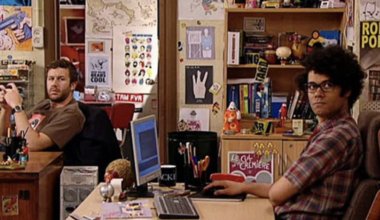In the past few years, Augmented Reality has made huge strides in becoming more mainstream — Pokémon Go took the world by storm and brands like Sephora and Warby Parker successfully utilized it to market their products to consumers.
Even more recently, Apple showed off its soon-to-be-released iPhone X, with its many built-in AR technologies, as well as ARkit, a development tool which enables brands and independent developers to construct AR apps easier and cheaper than ever.
What is AR product packaging?
To put it simply, augmented reality is a layer of computer-generated images displayed on top of the existing physical world and only visible through a device such as a smartphone or AR-enabled glasses.
What does this have to do with product packaging?
First off, brands are always looking to find a way to get a leg up when it comes to product packaging whether it be using art-inspired designs, humorous designs, eco-friendly designs, or any other number of designs that will draw the eyes of consumers.
Now that Augmented Reality is becoming more and more democratized, brands are incorporating AR with their product packaging, opening up almost limitless new creative options to market their products and create lasting impressions in their consumer’s minds. This can include AR-powered games, calls-to-action, or just simple, cool immersive experiences.
The way it works is pretty simple. A brand can either create an AR tool in-house or through a third-party AR designer. To access the AR aspect of the product package, a consumer will need to open an app and then scan the package with their phone, which will in turn launch digitally-rendered images that can then be interacted with.
Successful AR packaging examples
While AR product packaging is still in its infancy, there are several successful examples for marketers and brands to learn from:
- In 2009, as an early adopter, Nestlé launched a 3D AR video game based on the animated film RIO on over 26 million of its cereal boxes in over 53 countries.
- The famous Swedish vodka Absolut delivered an AR product packaging campaign that let drinkers scan tags on the bottle to explore the vodka’s history and picturesque views of its Scandinavian home country.
- In anticipation of the 2014 Fifa World Cup in Brazil, McDonald’s introduced new packaging to their french fries that let diners play a mini-game that let them kick soccer balls into a net.
- Also in 2014, New York City built an AR program that let riders scan their Subway cards and then explore a collection of artwork designed and created from METRO passes.
- And popular tequila brand José Cuervo released an AR that let customers scan their bottles to watch an interactive history of the brand.
https://www.youtube.com/watch?v=FNHFX8ppdH0
Where does AR product packaging go from here?
Without a doubt, AR’s prospects are bright in the coming years as the ever increasing mobile and digital world becomes more and more ubiquitous and consumers constantly check their phones while shopping at the grocery store, eating at the dinner table, or sitting on the subway.
Zappar is one of the companies leading the charge and attempting to bring AR product packaging into the mainstream. The AR dedicated business has worked with brands like PEZ, Warner Bro’s, and Fanta to bring interesting AR experiences to product packages.
“If you think about it, packaging is this enormous, untapped resource for brands to harness and put interesting content and messaging on,” said Zappar marketing director Max Dawes in an interview with Food Navigator USA.
Some interesting uses of AR product packaging that brands should look into, according to Dawes, is the use of games and edutainment for kids’ brands as well as AR experiences to show the origins of a product like scanning a whiskey bottle and being transported to a 360-degree tour of the distillery.
The biggest impediment to AR product packaging is its relative lack of implementation and, therefore, consumers’ lack of awareness of the technology.
